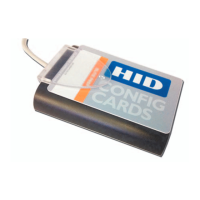Glossary
July 2017 PLT-01067, Version: A.7
Glossary
Term Description
AES
Advanced Encryption Standard
The Advanced Encryption Standard (AES) is a specification for the encryption of electronic data
established by the U.S. National Institute of Standards and Technology (NIST).
AES is based on a design principle known as a substitution-permutation network, and is fast in both
software and hardware. Unlike its predecessor DES, AES does not use a Feistel network. AES is a
variant of Rijndael which has a fixed block size of 128 bits,
The key size used for an AES cipher specifies tVersion: A.7he number of repetitions of transformation
rounds that convert the input, called the plaintext, into the final output, called the ciphertext. The
number of cycles of repetition are as follows:
10 cycles of repetition for 128-bit keys.
12 cycles of repetition for 192-bit keys.
14 cycles of repetition for 256-bit keys.
APDU
Application Protocol Data Unit
AEAD
Authenticated Encryption with Associated Data
CPO
Custom Product Offering
DES
Data Encryption Standard
DES is a widely-used method of data encryption using a private (secret) key that was judged so
difficult to break by the U.S. government that it was restricted for exportation to other countries. For
each given message, the key is chosen at random from among this enormous number of keys. Like
other private key cryptographic methods, both the sender and the receiver must know and use the
same private key.
DES applies a 56-bit key to each 64-bit block of data. The process can run in several modes and
involves 16 rounds or operations. Although this is considered “strong” encryption, many companies use
“triple DES”, which applies three keys in succession.
NIST
National Institute of Standards and Technology
OEM
Original Equipment Manufacturer
MAD
MIFARE Application Directory
PACS
Physical Access Control Solutions
SAM
Secure Application Module
SE
SIO-Enabled or Secure Element
SIO
Secure Identity Object
SNMP
Simple Network Management Protocol
SO
Secure Object - Can have more than one per SIO

